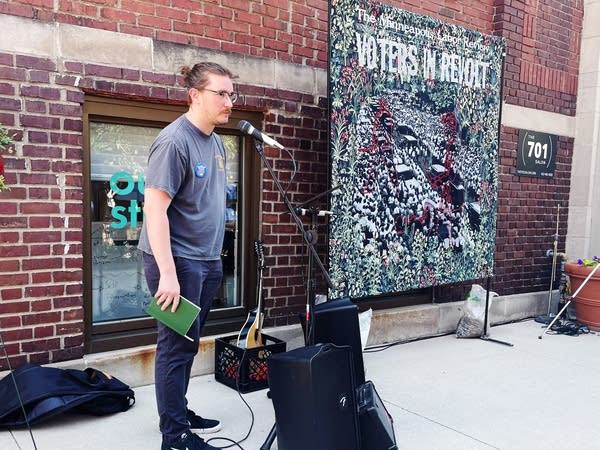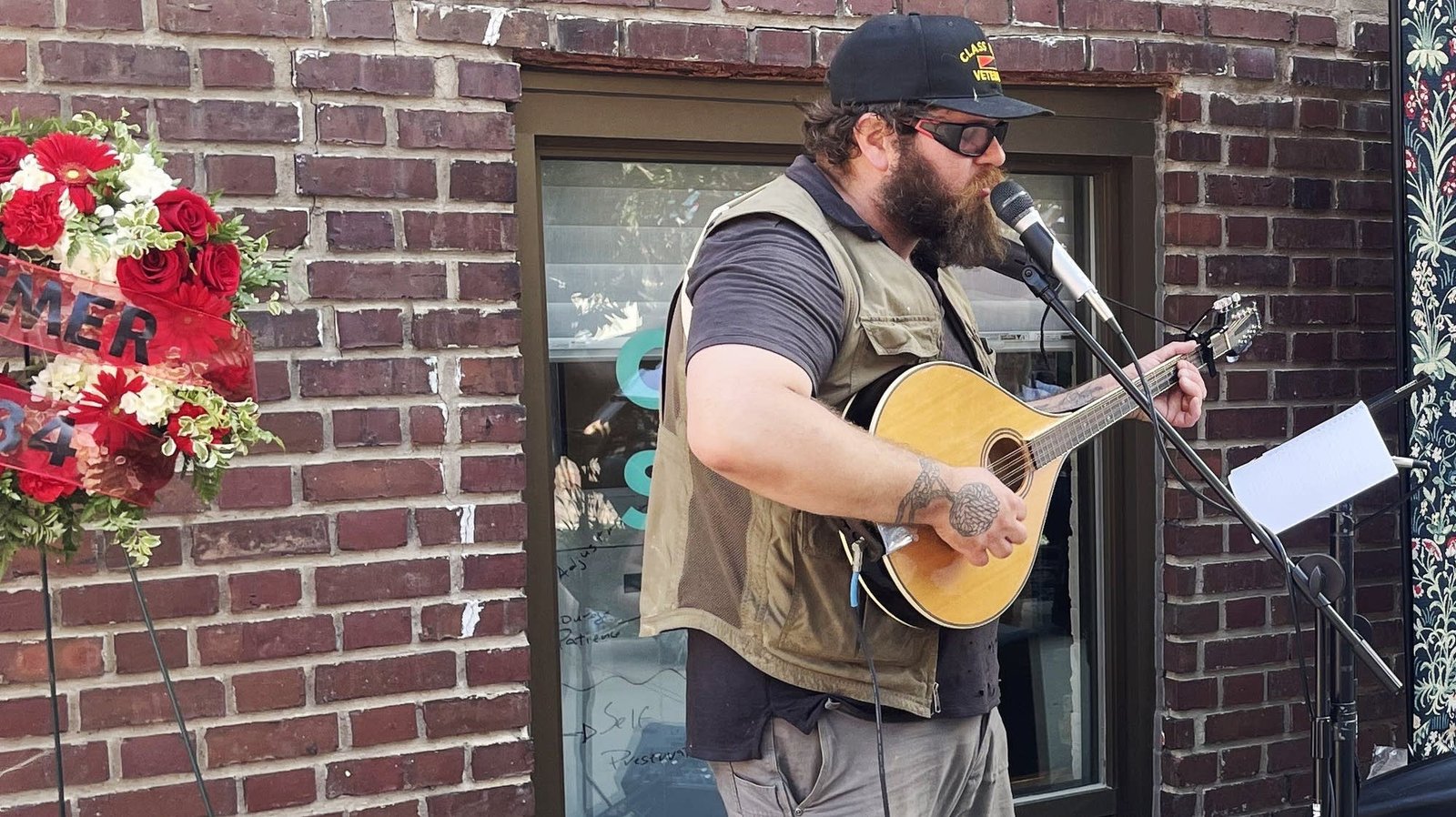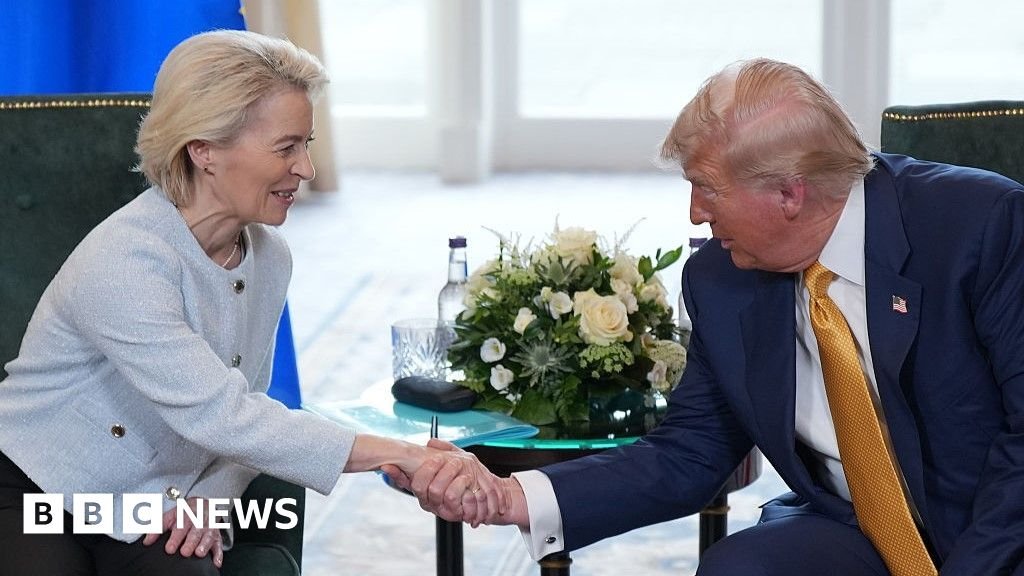Cobblestones still pave some streets in this part of Minneapolis.
Today, the area has been rebranded as the North Loop. But if you squint, you can still imagine workers gathering on the corner of 7th Avenue and 3rd Street back in 1934, demanding better wages to feed their families.
A small crowd gathered here Sunday to remember July 20, 1934 — also known as Bloody Friday — when police shot 67 picketers and killed two.
It’s been 91 years since that day, and 90 years since the passage of the law it influenced: the National Labor Relations Act, which guarantees the right to bargain collectively.
Linda Leighton is the granddaughter of Vincent “Ray” Dunne, one of the strikers. He died when she was 23, but his raucous discussions at the dinner table left an impact on her.
Leighton went on to be a 30-year member of the Service Employees International Union, and a longtime union steward and board member.
“Every one of us, I’d be willing to bet, have benefited from the sacrifices of the strikers of 1934 today,” Leighton told the crowd on Sunday. “Bosses, capitalists, politicians are trying to erase what working people have gained in the 91 years since Bloody Friday. But I believe that we can stop that. Let’s stand together.”
Union support has risen steadily over the last 15 years, reaching a level last seen in 1965, according to Gallup data.
But union membership has not kept pace with the rise in support. Only about one in 10 U.S. workers were in a union in 2024. That’s the lowest share since the 1930s, according to government figures.
And national labor laws — like the Labor Relations Act — are by no means set in stone.

Earlier this year, President Donald Trump signed an executive order limiting union bargaining rights for hundreds of thousands of federal employees, giving the government the power to hire or fire workers at will.
Those who support this move by Trump say it will save taxpayer money and encourage more efficiency, as well as protect national security.
“By one stroke of a pen in an executive order, he was able to take away the rights of some 700,000 workers. So [the National Labor Relations Act] is still at risk,“ said Peter Rachleff, a labor scholar and retired professor at Macalester College.
In Minnesota, union membership is stronger than it is nationally. And, experts say, even more than 90 years later, much of bargaining here still comes down to fair wages and safe working conditions.
“I think we are here in 2025 in a moment where there is, on the one hand, a deep awareness of how little progress working people have made and on the other hand, new energy and new hope that’s largely coming from a new generation,” Racheff said.
While many Minnesotans attended the Yacht Club Music festival over the weekend, members from the local stagehand’s union held a 3-day picket.
“RockForce labor is not paying their stagehands fairly,” said Kellie Larson from the International Alliance of Theatrical Stage Employees Local 13 (IATSE). “They are low-balling us in wages, making it harder for us to negotiate better contracts for our workers.”
Meanwhile, government workers in Minnesota have been embroiled in a conflict over health care costs and a return-to-office mandate.
“We recently came to a tentative agreement with Governor Walz, who is our employer,” said Chris Smith, from the American Federation of State, County and Municipal Employees (AFSCME) local 2101. “It is not a contract that, if it’s ratified, is going to make progress in any way. It’s just status quo, and we had to fight hard to get status quo.”
But Smith said involvement and engagement from his fellow workers has been encouraging.
“I’ve seen more organizing than I have in my 16 years of being a member, both within our union and in solidarity with other unions and just the community.”
Organizing efforts at the Hormel plant in Austin, Minn., in 2023 also saw record turnout.
Workers won an “industry-setting standard” in 2023, including a $4.75 raise in wages alone, according to union President Rena Wong, of United Food and Commercial Workers Union local 663.
This summer, UFCW workers at the processing plant next door are trying to bargain for the same.
“The reason we were able to get such a high increase at $4.75 is because we had 1,000 workers out on the streets of Austin, on Labor Day, right?” Wong said. “Folks had not seen that sort of activity since that strike in the ’80s.”
In Duluth, hundreds of health care providers recently called off a strike asking for better working conditions, including workplace safety measures.
Nurses in the Twin Cities and Duluth reached an agreement earlier this month to avoid their own strikes.
“Historically, unions started because workers were coming together to demand better working conditions, safer working conditions, more fair and dignified working conditions,” said Chris Rubesch is president of the Minnesota Nurses Association.
He sees unions as a crucial balancing scale to large corporations, a means of transparency in giant health care mergers, and a check on emerging technologies, like Artificial Intelligence.
“And I don’t think that that desire for people to have safety, dignity, respect, or a fair deal is limited just to a standard industry. I think that you find workers in every industry who want that,“ he said.




